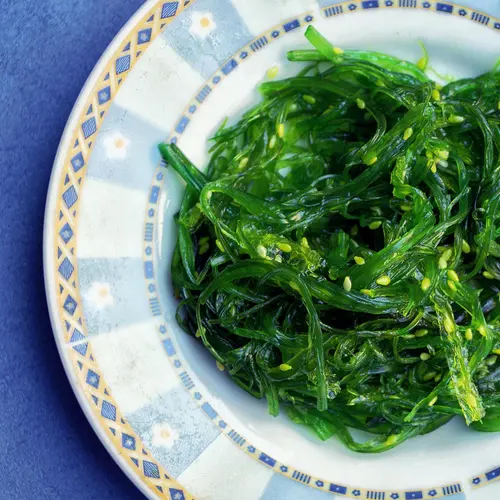The tamarind tree is much prized in many parts of the world for its beauty and its fruit. Tamarinds are leguminous trees because they produce fruit in the form of a bean-like pod. This bean contains a sour pulp that becomes very sweet as it ripens. People eat the fruit raw and also use its pulp in cooking.
The leaves, beans, bark, and wood of the tamarind tree have a wide variety of uses. Tamarind is an ingredient in Worcestershire sauce and is used in many dishes in Asia, South and Central America, Africa, and the Caribbean. It appears in many chutneys, sauces, candies, and drinks.
Health Benefits
People use tamarind in traditional medicine, but its therapeutic uses need more exploration. Tamarind pulp contains a variety of nutrients that can boost your health.
Tissue Health
Amino acids, the building blocks of protein, are necessary for the body to grow and repair tissues. Some amino acids are essential, meaning that the body can't synthesize them, so people must get them from food. Tamarind contains significant amounts of all the essential amino acids except tryptophan. It meets the standards of the World Health Organization for an ideal protein for the other amino acids. Researchers are unsure, however, how well the body can absorb all the nutrients found in tamarind.
Cancer Risk Reduction
Scientists recommend a diet high in antioxidants for many reasons, one of them being a reduction in the risk of cancer. Antioxidants can prevent free radicals from damaging cell DNA. Scientists believe that many cancers begin with harm to DNA. Phytochemicals found in plants have antioxidant qualities. Tamarind is rich in several phytochemicals, including beta-carotene.
Brain Health
The category of B vitamins contains eight different vitamins that function similarly. All are water-soluble so the body doesn't store them. You should be able to get enough B vitamins in your diet without resorting to supplements. The entire range of B vitamins is essential for good health. They are especially necessary for proper functioning of the brain and nervous system. Tamarind is rich in B vitamins, especially thiamine and folate. Like other plants, tamarind does not contain B12.
Bone Health
People who get enough magnesium in their diets have better bone density than those who are deficient. Many people, especially teens and those over 70, do not get adequate magnesium. Tamarind is a rich source of magnesium. It also contains more calcium than many plant foods. The combination of these two minerals, plus weight-bearing exercise, could help prevent osteoporosis and bone fractures. The body requires vitamin D to use calcium. Tamarind is not a significant source of vitamin D, so you will need to get it from other sources.
Nutrition
Tamarind is very rich in nutrients, providing at least 10% of:
- Vitamin B1 (Thiamine)
- Vitamin B3 (Niacin)
- Potassium
- Magnesium
- Phosphorus
- Iron
Nutrients per Serving
A half-cup serving contains:
- Calories: 143
- Protein: 2 grams
- Fat: 0 grams
- Carbohydrate: 38 grams
- Fiber: 3 grams
- Sugar: 34 grams
Things to Watch Out For
Most of the calories in tamarind pulp are in the form of sugar. The nutrient load of tamarind still makes it a valuable food for most people. If you are watching your weight or your intake of sugar, you might have to use it in small amounts only. Tamarind is also used in candy and sweetened drinks. The added sugar in these items makes them poor choices for people with diabetes, weight management issues, or metabolic syndrome.
How to Use Tamarind
You can eat tamarind plain by opening up the pod and eating the pulp. Because the pods don't spoil easily, you can order them through the mail if your local market doesn't carry them. You can also buy tamarind in the form of a compressed block, as a concentrate, or as a bottled paste. These forms are shelf-stable, at least until opened. Some tamarind products will be sweeter than others, depending upon when the pods were picked. For the healthiest uses of tamarind, avoid recipes calling for added sugar or large amounts of oil.
Here are some ways to use tamarind:
- Try your hand at a classic Pad Thai with tamarind in the sauce.
- Use tamarind to flavor dal, the traditional Indian dish made of lentils.
- Make a classic tamarind chutney and use it as a dip or sauce.
- Blend tamarind paste with soy sauce, ginger, and garlic to make a tangy salad dressing.
- Mix tamarind sauce with barbeque sauce for a more complex flavor.
- Use tamarind to make a stir-fry sauce for chicken or shrimp.
- Use it in a marinade for beef to get a tenderizing effect and added flavor.

